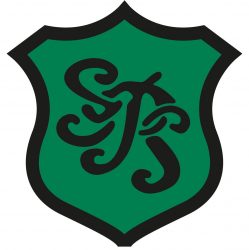We had a fantastic visit from one of our parents; Mrs Schofield, who is a kilt maker to trade. She brought in samples of tartan and explained how the cloth was made into a kilt. To demonstrate this she brought in a sample kilt and also a length of material, 5 meters long which was the amount needed to make a kilt for a child or a lady. To make a kilt for a man you would need 7 meters. It was so big that we all had to go outside the classroom into the corridor so we could lay it flat. Mrs Schofield demonstrated how the kilt is folded to make pleats for the back of the kilt. It is very important that the tartan is folded in the correct place so the pattern of the kilt looks correct. We then went back in time to learn about the “great kilt” which was used by the highlanders. It consisted of a large piece of material which was wrapped around the wearer and held in place with a belt and a clasp. Mrs Schofield used Mr Ritchie as a model to demonstrate the different way the great kilt could be used to carry things, as a raincoat and a blanket. The great kilt was made from wool so was very hard wearing, very warm and also waterproof as long as it did not get too wet. We all really enjoyed our visit.
We have also been looking at the history of tartan and how it is woven on big looms. Traditionally you can use up to eight different colours to make the design linked to the different Scottish clans. Using this information we then designed our own tartan and have modelled the kilts in the classroom using our “kilted tatties”. Our display looks as if the tatties are all dancing in their amazing tartan kilts!
In Science we have been looking at how glass is made. We learned about the manufacturing process and the different things glass can be used for. We then designed information posters to explain the process for display in the classroom.
In Maths we have started to look at subtraction using the column or “chimney” method. We have learned that sometimes we need to exchange or borrow a 10 from the 10s place value column and add it to the units column to enable the number to be subtracted. We have found it quite tricky but Mr Ritchie has given us a catchy saying to help us remember about knocking on the door of the “bank of tens and asking if we borrow any, and if we can we are not greedy as we only want to borrow one ten”.
We are continuing to read our class novel “Flash the Sheep Dog” by Kathleen Fidler and we have just learned that Tom has received his new sheep dog puppy called Flash. We are all looking forward to hearing about what happens next!
Mr Ritchie and the tiggerrific P3B’s


